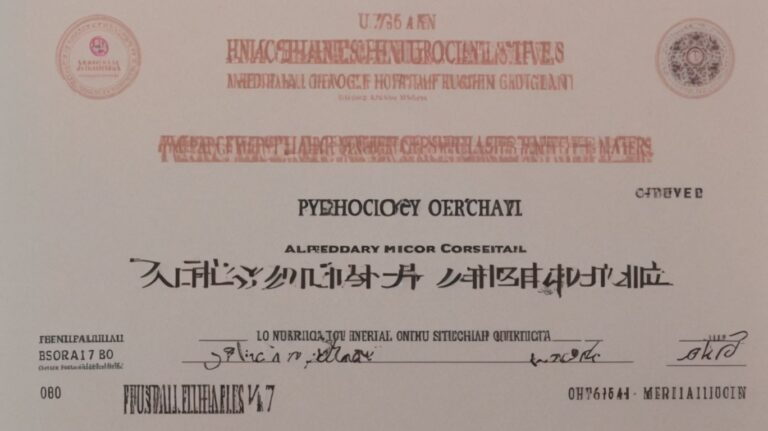Arousal in sport psychology is a fundamental aspect of achieving peak performance. Understanding the different theories of arousal, such as drive theory and inverted U theory, is crucial for athletes and coaches.
The impact of arousal on sports performance, both positive and negative, cannot be understated. In this article, we will explore how athletes can control their arousal levels through techniques like breathing exercises and mental imagery. We will also debunk common misconceptions about arousal in sports, such as the belief that it only refers to sexual excitement.
If you’re looking to take your game to the next level, understanding arousal in sport psychology is essential.
Contents
- 1 Key Takeaways:
- 2 What Is Arousal in Sport Psychology?
- 3 What Are the Different Theories of Arousal?
- 4 How Does Arousal Affect Performance in Sports?
- 5 How Can Athletes Control Their Arousal Levels?
- 6 What Are Some Common Misconceptions About Arousal in Sports?
- 7 Frequently Asked Questions
- 7.1 What is arousal in sport psychology and how does it impact performance?
- 7.2 What are the different levels of arousal and how do they affect performance in sports?
- 7.3 What are some techniques for managing arousal levels in sports?
- 7.4 How does arousal impact an athlete’s decision-making abilities?
- 7.5 Can arousal levels vary between different sports?
- 7.6 How can coaches help their athletes regulate their arousal levels?
Key Takeaways:
- Optimal arousal levels are essential for peak performance in sports.
- Various theories explain how arousal affects performance, such as drive theory and multidimensional anxiety theory.
- Athletes can control their arousal levels through techniques like breathing, mental imagery, and positive self-talk.
What Is Arousal in Sport Psychology?
Arousal in sport psychology refers to the level of physiological and psychological excitement experienced by an athlete during competition or training.
This state of arousal can significantly impact an athlete’s performance, as it directly influences their cognitive and somatic states. Arousal can lead to heightened focus, increased energy, and improved reaction times, which are essential for peak athletic performance.
Excessive arousal can also result in anxiety, decreased attentional control, and muscle tension, negatively affecting an athlete’s abilities. Arousal plays a vital role in governing an athlete’s behavior, influencing their decision-making, risk-taking tendencies, and overall approach to competition.
Understanding and managing arousal levels is crucial for athletes to optimize their performance while maintaining emotional and mental balance.
What Are the Different Theories of Arousal?
The realm of sport psychology encompasses various theories of arousal, each offering distinct perspectives on the relationship between arousal and athletic performance.
One of the foundational theoretical frameworks in sport psychology is the drive theory, which posits that an individual’s performance is influenced by the intensity of physiological arousal.
In contrast, the inverted U theory suggests that there is an optimal level of arousal for peak performance, beyond which performance deteriorates. Similarly, the catastrophe theory proposes that performance can unexpectedly decline under high levels of arousal.
Another model, the Individual Zones of Optimal Functioning (IZOF), emphasizes individualized zones of optimal arousal for each athlete. The Multi-Action Plan model (MAT) focuses on the regulation of arousal and emotions in high-pressure situations, offering a comprehensive approach to optimizing performance.
Drive Theory
Drive theory, proposed by psychologists such as Clark Hull, posits that arousal levels directly influence an athlete’s performance and psychological state.
This theory highlights the concept of arousal and its impact on an individual’s readiness and motivation to perform.
According to the theory, an optimal level of arousal is necessary to achieve peak performance, with both low and high arousal levels potentially leading to diminished performance.
The theory suggests that individuals experience heightened psychological states such as anxiety, excitement, or determination based on their arousal levels, ultimately influencing their performance outcomes.
The understanding of these arousal-performance relationships can aid in devising effective strategies to manage arousal levels and optimize athletic performance.
Inverted U Theory
Inverted U theory, as proposed by Yerkes and Dodson, suggests that there is an optimal level of arousal for peak performance, known as the ‘zone of optimal functioning‘.
This theory posits that performance improves with arousal up to a certain point, beyond which additional arousal leads to a decline in performance.
The relationship between arousal and performance is pivotal in understanding how individuals function in different situations. Each person has their own individual zone of optimal functioning, meaning that what works for one athlete may not work for another. Understanding and finding this optimal zone is crucial for maximizing athletic achievement and success.
Catastrophe Theory
Catastrophe theory, introduced by Fazey and Hardy, explores the sudden and drastic changes in performance as a result of interacting physiological responses to arousal.
One of the key aspects of catastrophe theory is its focus on non-linear relationships between arousal and performance, emphasizing that small changes in arousal can lead to significant and rapid shifts in performance.
Physiological responses such as heart rate, hormone levels, and muscle tension play a crucial role in this dynamic. Physiological arousal is a central concept in this theory, influencing an individual’s readiness and capability to perform certain tasks.
This interplay between arousal and performance has implications across various fields, including sports psychology, occupational performance, and stress management.
Individual Zones of Optimal Functioning (IZOF)
The individual zones of optimal functioning (IZOF) theory emphasizes the unique arousal and anxiety patterns of each athlete, recognizing distinct emotional responses to varying levels of arousal.
The IZOF theory highlights the idea that what may be an optimal arousal level for one athlete might not be the same for another. This underlines the individualized nature of arousal and anxiety patterns, and the need to tailor support programs accordingly.
By taking into account an athlete’s specific emotional responses, coaches and support staff can better understand how arousal impacts performance, and mitigate the negative effects of anxiety. The implications of this theory for individualized athlete support are significant, calling for a more nuanced and tailored approach.
Multidimensional Anxiety Theory (MAT)
The multidimensional anxiety theory (MAT), developed by Martens and his colleagues, examines the interplay between arousal, trait anxiety, and cognitive state in influencing athletic performance.
The theory contends that arousal, which is the physiological state of readiness, interacts with trait anxiety, which represents a stable personality characteristic, and cognitive state, referring to the individual’s psychological processes.
These interactions can have profound effects on an athlete’s performance. The MAT emphasizes that the combination of high arousal, elevated trait anxiety, and negative cognitive interpretations can impair performance, leading to decreased focus, disrupted attentional control, and heightened distractibility.
Conversely, moderate arousal, optimal cognitive appraisals, and manageable trait anxiety levels are associated with improved performance outcomes.
How Does Arousal Affect Performance in Sports?
Arousal exerts both positive and negative effects on athletic performance, influencing an athlete’s cognitive and somatic states, and subsequently, their behavior and technique.
Positive arousal can lead to increased attention, alertness, and motivation, enhancing an athlete’s focus and performance. On the other hand, excessive arousal may result in anxiety, disrupted concentration, and muscular tension, impeding optimal athletic execution.
These cognitive and somatic state influences directly impact an athlete’s decision-making, reaction time, and physical coordination, affecting their overall sportsmanship. The behavioral consequences of arousal range from increased risk-taking and aggression to hindered judgment and self-control.
Arousal levels can significantly influence an athlete’s technical proficiency, affecting their precision, speed, and consistency in executing complex motor skills.
Positive Effects of Arousal
Arousal can lead to positive effects on an athlete’s performance, such as heightened focus, increased motivation, and enhanced utilization of relaxation procedures to manage anxiety.
When an athlete experiences optimal levels of arousal, they are often in a state of heightened awareness and alertness, which can significantly benefit their performance.
The increased focus resulting from arousal can boost their attention to detail and precision during movements, leading to improved execution of skills. Heightened motivation stemming from arousal can drive athletes to push their physical and mental limits, helping them achieve peak performance.
Negative Effects of Arousal
Conversely, arousal can also lead to negative effects, such as increased stress, cognitive anxiety, and the need for implementing cognitive anxiety reduction techniques to mitigate detrimental impacts on performance.
When athletes experience heightened arousal, whether due to the pressure of competition or external stressors, it can induce significant levels of stress. This stress can manifest physically and mentally, impacting their performance negatively.
Cognitive anxiety, characterized by excessive worry and negative thoughts, can hinder an athlete’s focus, decision-making, and overall cognitive function during critical moments of the game.
To counter these challenges, athletes and coaches must integrate cognitive anxiety reduction techniques into their training routines. These techniques may include visualization, controlled breathing exercises, and systematic desensitization to help athletes manage arousal levels and maintain peak performance under pressure.
How Can Athletes Control Their Arousal Levels?
Athletes can employ various methods to manage and control their arousal levels, including utilizing breathing techniques, mental imagery, and relaxation procedures to achieve optimal psychological and physiological states.
These techniques enable athletes to regulate their internal state, resulting in improved focus, performance, and overall well-being.
Breathing techniques assist in controlling heart rate and calming the mind, while mental imagery helps in visualizing successful outcomes and boosting confidence.
Additionally, relaxation procedures such as progressive muscle relaxation and meditation aid in reducing muscle tension and promoting a tranquil state of mind.
Breathing Techniques
Breathing techniques are effective for reducing arousal levels, managing somatic anxiety, and promoting the relaxation response essential for optimal athletic performance.
When athletes are faced with high-pressure situations, employing breathing techniques can help in lowering their arousal levels, which is crucial for maintaining performance efficiency.
By using controlled and deep breathing, the body’s sympathetic nervous system is subdued, leading to a decrease in muscle tension and heart rate, thereby managing somatic anxiety.
By focusing on their breathing patterns, athletes can activate the parasympathetic nervous system, leading to a relaxation response which can foster a more balanced physiological state, allowing for better concentration and enhanced performance.
Mental Imagery
Mental imagery, including visualization and positive self-talk, serves as a valuable tool for athletes to enhance self-confidence, manage arousal, and prepare for optimal performance, as indicated by research findings from the APA PsycNet.
Indeed, mental imagery plays a crucial role in the regulation of arousal levels. When athletes engage in vivid visualizations, they can simulate the ideal performance scenarios, which, in turn, helps them maintain an optimal level of arousal.
Studies have shown that athletes who utilize mental imagery techniques exhibit greater control over their arousal, enabling them to channel their energy effectively.
Positive Self-Talk
Positive self-talk, a pivotal aspect of sport exercise psychology, is instrumental in managing arousal levels, enhancing cognitive states, and promoting self-confidence among athletes.
When athletes engage in positive self-talk, they are effectively using internal dialogue to regulate their arousal levels, influencing their emotional and physiological readiness for performance.
This, in turn, can lead to improved focus, attention, and decision-making during high-pressure situations.
The impact of positive self-talk extends beyond immediate performance enhancement; it plays a crucial role in the cultivation of self-confidence, reinforcing belief in one’s abilities and resilience.
By incorporating positive affirmations and constructive self-statements, athletes can bolster their mental fortitude, contributing to sustained motivation and perseverance.
Ultimately, the integration of positive self-talk as a core component of sport exercise psychology underscores its significance in fostering psychological resilience, optimizing cognitive functioning, and nurturing a robust foundation for athletic success.
Relaxation Techniques
Relaxation techniques, such as autogenic training and progressive relaxation, offer athletes effective means to modulate arousal, manage physiological responses, and achieve optimal psychological states for peak performance.
Autogenic training is a relaxation technique that involves self-suggestion and self-hypnosis. It helps athletes achieve a state of deep relaxation, promoting a sense of warmth, heaviness, and overall calmness in the body.
This can reduce muscle tension, heart rate, and anxiety levels, leading to improved focus and mental clarity during athletic performance.
Progressive relaxation, on the other hand, involves tensing and then relaxing specific muscle groups. This allows athletes to release physical tension, enhancing their ability to control arousal levels and regulate stress responses. As a result, it can contribute to better overall performance.
What Are Some Common Misconceptions About Arousal in Sports?
Despite its relevance in sport psychology, there exist several misconceptions about arousal in sports, including its confusion with anxiety, misperceptions regarding its impact, and the associated emotional responses.
It is important to differentiate between arousal and anxiety in the context of sports.
Arousal is a state of physical and mental preparedness to perform optimally, whereas anxiety is a negative emotional state characterized by worry and apprehension.
The impact of arousal is often misunderstood, with some believing that higher arousal always leads to better performance.
Excessive arousal can lead to decreased performance as well.
The emotional responses associated with these misconceptions can range from excitement and motivation to fear and tension, highlighting the complexity of arousal in sports.
Arousal Only Refers to Sexual Excitement
One common misconception about arousal in sports is the misperception that it solely pertains to sexual excitement, failing to recognize the broader perception demand and environmental influences on athletic performance.
While sexual arousal is one aspect of human experience, in the context of sports, arousal encompasses a spectrum of physiological and psychological states that impact performance.
It involves mental readiness, focus, and intensity, often influenced by external factors such as crowd support, competitive pressure, and the significance of the event.
Arousal management in sports is crucial for athletes to achieve optimal performance, requiring a balance between excitement and composure.
Coaches and athletes work on strategies to regulate arousal levels, understanding that it can significantly affect decision-making, reaction times, and overall performance.
Arousal and Anxiety Are the Same Thing
Another widespread misconception is the conflation of arousal with anxiety, disregarding the distinct cognitive states, trait anxiety factors, and their differential impact on athletic performance.
In the realm of sports psychology, arousal refers to the level of activation or energy present in an individual during athletic endeavors. This can encompass a range of feelings and emotions, from excitement and eagerness to tension and stress.
On the other hand, anxiety is characterized by worry, apprehension, and fear, often linked to the perceived threat or pressure of a sports event. It is crucial to differentiate between these two states, as they can have very different effects on sports performance.
While moderate arousal can enhance focus, motivation, and physical readiness, excessive anxiety can lead to distractions, muscle tension, and impaired decision-making on the field or court.
Arousal Is Always a Bad Thing
A prevalent misconception is the belief that arousal is always detrimental in a competitive sport context, neglecting the positive influences of arousal on physical activity, cognitive states, and athlete performance in competitive environments.
While excessive arousal can lead to anxiety and affect performance negatively, an optimal level of arousal can significantly enhance an athlete’s focus, reaction time, and overall performance.
Arousal serves as a catalyst for heightened attention, motivation, and readiness to perform at optimal levels, offering a competitive edge in sports.
Understanding the nuanced dynamics of arousal in sporting contexts is crucial for athletes, coaches, and sports psychologists to optimize performance and well-being.
Frequently Asked Questions
What is arousal in sport psychology and how does it impact performance?
Arousal in sport psychology refers to the level of physiological and psychological activation in an athlete’s body. It can have a significant impact on an athlete’s performance, as both too much and too little arousal can hinder their ability to perform at their best.
What are the different levels of arousal and how do they affect performance in sports?
There are three main levels of arousal: low, moderate, and high. Low arousal can lead to lack of motivation and attention, while high arousal can result in anxiety and tension. Moderate arousal, on the other hand, is associated with optimal performance as it allows athletes to be alert, focused, and energized.
What are some techniques for managing arousal levels in sports?
Some common techniques for managing arousal levels in sports include deep breathing, visualization, positive self-talk, and music. These techniques can help athletes regulate their arousal levels and achieve optimal performance.
How does arousal impact an athlete’s decision-making abilities?
Arousal can greatly impact an athlete’s decision-making abilities. When arousal levels are too high, athletes may become impulsive and make hasty decisions, while low arousal levels can lead to hesitation and indecision. It’s important for athletes to find their optimal arousal zone for making effective decisions during a game.
Can arousal levels vary between different sports?
Yes, arousal levels can vary between different sports. For example, a sport like weightlifting may require high levels of arousal to perform at one’s best, while a sport like golf may require lower levels of arousal for precision and focus.
How can coaches help their athletes regulate their arousal levels?
Coaches play a crucial role in helping their athletes regulate their arousal levels. They can work with athletes to develop pre-game routines, provide calming techniques, and create a positive and encouraging team environment. It’s important for coaches to understand the individual needs of their athletes and tailor their approach accordingly.




